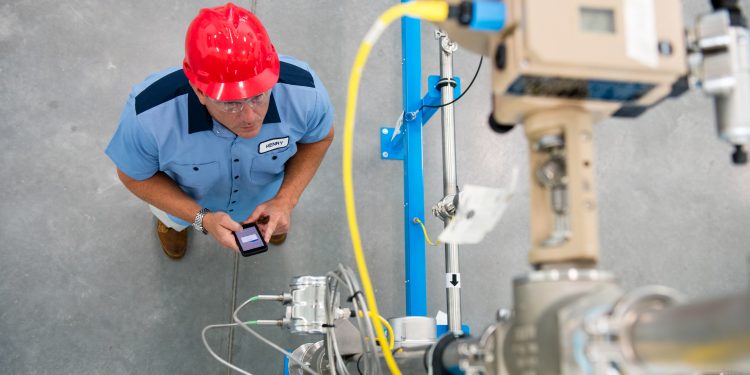Sophisticated Condition Monitoring

When you move away from traditional scheduled maintenance and let computers do the talking, you can prevent major equipment breakdowns.
For any manufacturing or warehousing operation, the biggest nightmare scenario is the breakdown of a major piece of equipment, one that brings everything to a screeching halt. While the equipment is down, your staff sits idle, products don’t move in your facility, and your customers are disappointed. No one wants to experience this.
Estimating the true costs of this downtime must consider a variety of factors. These might include the cost of repairs or replacement; unplanned lost production time; the cost of labor during and after the event; the cost of spare parts inventory if needed; the cost of manually monitoring and collecting data.
You also need to consider who within your facility is impacted by downtime—who are the stakeholders? Essentially, it runs from the shop floor to the top floor.
On the manufacturing or warehousing floor, you have your day-to-day employees who will be looking to see what has gone wrong and what to do about it. They’ll wonder about the ease of installation, warning signs of shutdown, and following long work orders. At the middle level, you have reliability engineers. In the face of an equipment failure, they’ll be thinking about what replacement equipment they should buy, how it might impact daily operations, integration with existing IT systems, and warning systems before breakdown.
At the top—the C-suite—you’ll have the executive level investors who will question equipment purchases from a cost basis, ROI, the impact on the bottom line, and the health and safety of employees. Finally, controls engineers and IT stakeholders must weigh in to bring it all together.
Too often, big breakdowns come as the result of using traditional condition monitoring techniques. These can include vibration analysis, oil and electrical analysis, and temperature monitoring. Usually, this manual monitoring is carried out by a skilled reliability engineer who develops a monthly paper report for customers. It doesn’t provide any real-time analysis and often fails to deliver real value.
What’s changing is a switch to closed-loop monitoring. This allows engineers to gather data, break it down, and then pull it all together to understand what it means. It involves collecting much of the same data that an engineer captures manually, like belt positions, electrical currents, power quality, and temperature. The benefit of using more intelligent equipment that provides computerized maintenance monitoring is that it can provide condition-based monitoring and maintenance, rather than scheduled maintenance.
Think of it as your “check engine” light. When the computer spots a part that’s about to fail, it can alert you so that you can fix the issue before it leads to a major breakdown. As an example: if you are condition monitoring the vibrations of an electric motor, it will look for bearing anomalies or loose mountings and shafts. Once it identifies an issue, it will drive specific prescriptions on how to react and fix the issue.
Once implemented, you can expect a cost savings of around 8% to 12% overall, according to one government report. If deployed in a large-scale operation, that total can reach into the hundreds of thousands of dollars. If you aren’t working with automated condition monitoring, you’re missing out.
The Solutions Community recently presented on the topic of “Condition Monitoring & Reliability: Foundation of a New Frontier” at ProMat 2023. To view a full recording of the seminar, please visit the ProMat Site.
For more information about the Solutions Community: mhi.org/solutions-community
For further articles from the Solutions Community:
Reduce Your Energy Consumption
The Digitization Of Intralogistics: Sortation
Creating A Flexible Order Fulfillment Operation
Where Do Conveyors Go From Here?
The Digitization Of Intralogistics: Storage
Supply Chain Lessons Learned During The Pandemic



